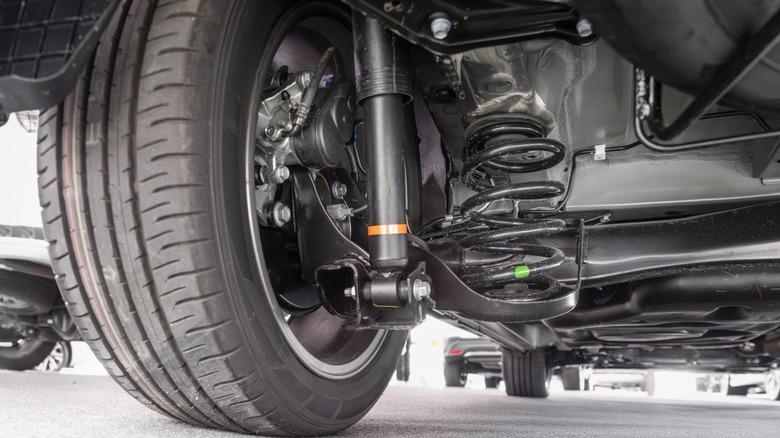Front Or Back: Which Tires Wear Faster On A Rear-Wheel Drive And Why?
Rear-wheel drive (RWD) cars are fun and sporty, the choice cars for drag racing, drifting, burnouts, and all the exciting stuff. Sending all the car's power to the rear wheels might be bad for traction (especially if you have a front-mounted engine), but it has its perks. For better or worse, with great power comes great responsibility. Joyriding or daily driving an RWD means that you have to be aware of what parts of the car will wear faster because it receives the most stress, like, for example, your tires.
If you guessed that a rear-wheel drive's rear tires wear faster than the front, ding, ding, ding, you guessed right. It's not rocket science: all the power the engine produces is delivered to the back tires, which means that they're responsible for propelling the car forward. All this power causes more friction, more stress, and eventually more wear. The rear tires will wear out even faster if you drive a very sporty RWD car aggressively, as all the car's load is thrown to the back when you accelerate. Front-mounted RWDs also often suffer from poor traction, which can lead to wheel spinning, which is good for burnouts, but those can be very hard on the tires.
You'll need routine tire rotation
The good news is that tire wear happens more evenly on rear-wheel drives compared to FWDs, since the wheels for steering and braking are separate from those for power delivery unlike in front-wheel drives. Also, most cars are set up to have strong braking bias on the front wheels, since all the weight is thrown forward when you slow down or come to a stop — that's the reason you may notice front brake pads wearing out faster than the back. This also means that the front tires are likely wearing out in RWD cars that experience aggressive braking. Interestingly, this can lead to more even wear across the tires.
That still doesn't exempt you from tire rotation, though. Ignoring tire rotation can lead to major vehicle problems, affect your MPG, and even put your life at risk — especially when the road is wet or slippery. How often you rotate tires will depend on your usage and what the manufacturer recommends, but the Michelin Owner's Manual (PDF) suggests doing it every 6,000 to 8,000 miles. When you want to rotate tires on a RWD, move the back tires to the front on the same side, but switch the front tires' sides when moving them to the back. If, despite regular tire rotation, you notice that the rear tires are still wearing out quickly, then it's time to inspect your car for suspension issues or take it to the shop for an alignment.

